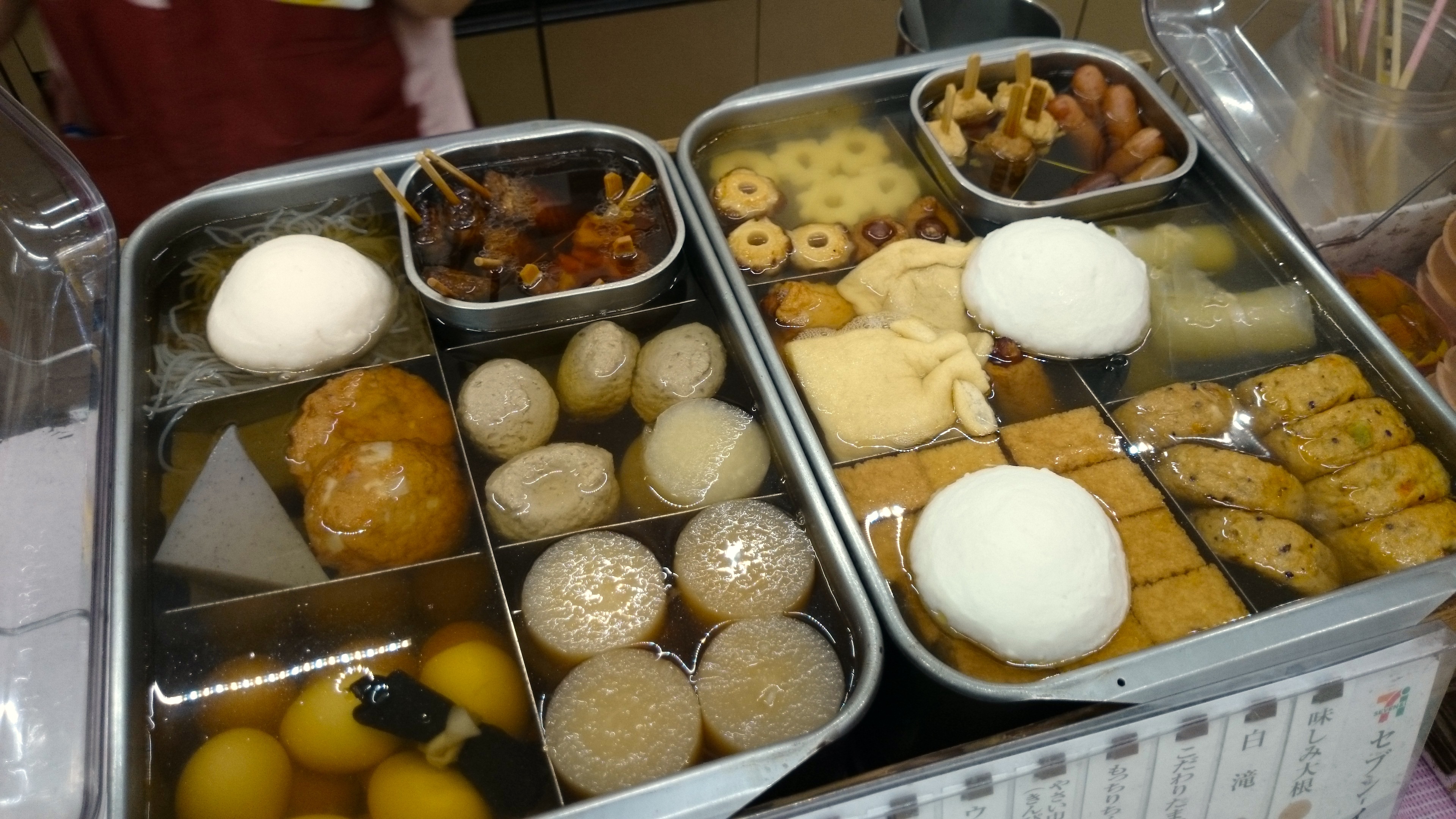
When it comes to Japanese food, everyone and their grandmother knows the classics like sushi, noodles and tempura. But one food that always takes visitors to Japan by surprise, and which has just this month started showing up in convenience stores again, is oden. Rarely seen outside of Japan, many of the ingredients in this incredible savoury pick ‘n’ mix look almost alien to non-Japanese eyes, and so visitors are often wary of trying it for themselves.
With this in mind, today we’d like to introduce you to a handful of typicaloden ingredients, teaching you their names and telling you a little bit about each of them, so that the next time you pass a food cart or duck into a conbini and get a waft of that unmistakable aroma, you won’t be afraid to order some for yourself.
Essentially just a variety of foods served in a light, soy-flavoured broth, oden is a hugely popular winter dish in Japan, and usually appears around September or October depending on the region. Warm, filling and crazy tasty, there are all kinds of oden experiences to be had, with everything from typical convenience store fare (on which we’ll be focusing today) to far more sophisticated takes on this winter warmer available from dedicated vendors.
Some of the typical ingredients you’ll find in oden, however, can look a little intimidating, and buying some for yourself is made even trickier by the fact that vendors usually require customers to ask for the ingredients they want, rather than fishing them out for themselves. If you don’t have the vocabulary and have never come across some of these food items before, you may well find yourself with naught but a hard-boiled egg floating in your broth. But fear not because RocketNews24 has got your back, and we’re going to introduce you to some of the classics.
Feeling hungry? Here we go!
- 大根 Daikon
Let’s start with the basics. Having oden without a slice of daikon radish is like ordering a pizza without cheese–technically you’re allowed to do it, but short of having some life-threatening illness that prevents you from eating it, you’re in need of a smack. Far milder and softer than radishes found in the West, daikon does a wonderful job of soaking up the oden broth, and is actually a lot lighter than it looks.
This giant chunk I had here actually only cost me 75 yen (US$0.71) and I polished it off in about 20 seconds. I actually wish I’d bought two of them now…
- 焼ちくわ Yaki chikuwa
Another essential oden ingredient, chikuwa are tube-shaped fish-paste cakes. The “yaki” part in the name, as you can probably tell from the chikuwa’s appearance, denotes that it has been cooked–in this case lightly fried–before being added to the broth. Chikuwa’s consistency is somewhere between cooked meat and tofu – it’s soft and spongy, but satisfying to bite into and it won’t call apart between your chopsticks. Plus, yaki chikuwa look really cool – it’d be a shame not at add one to your bowl.
- 餅入り巾着 Mochiiri Kinchaku
Often known simply as kinchaku, these are exactly what they look like – little pouches, or “purses”, made from deep-fried tofu. Inside you’ll find a thick, sticky mochi rice cake. There’s no proper way to eat these things, so either pick it up with your chopsticks and bite into it, or tear it open and pick at the bag and its filling. They’re a little pricier than some oden ingredients, costing around 130 yen each from convenience stores, but there’s no denying that kinchaku look very cool.
- ゆで卵 Yude tamago
These are just hard-boiled eggs which have been left in the stock for so long that they have changed colour and picked up a delightful amount of salty flavour. Yude tamago aren’t the most exotic oden ingredient ever, but they’re tasty and filling – exactly what you need as the weather starts to turn chilly. Just be careful trying to pick these things up with chopsticks; one big splash back into your soup and it’s game over.
- こんにゃくKonnyaku
It may look like a slice of dragon hide, but this is actually made from the root of a plant call the Amorphophallus konjac, sometimes referred to by well-meaning English-speaking Japanese as “devil’s tongue”, which is perhaps even more likely than the food’s curious appearance to scare first-time diners off. Konnyaku features in a number of Japanese dishes in all shapes and sizes, and is like a sort of tough, savoury jelly. On its own it doesn’t taste of an awful lot, but soaked in a broth like oden’s, it’s genuinely delicious.
In true Japanese food programme tradition, here’s a GIF image of me holding my wibbly-wobbly konnyaku.
Oh, and one quick word of warning: the food konnyaku (ko-n-nya-ku) is not to be confused with konyaku (ko-n-ya-ku), which actually means ‘engagement’. It wouldn’t be a good idea to frequently profess your love of ‘engagement’ to Japanese friends and coworkers, lest you end up with an undeserved reputation as a heartbreaker…
- 白滝 Shirataki
Yes, it looks a bit like an alien overlord or some kind of mutated squid that’s let itself go, but this is actually just a bunch of noodles made from the aforementioned konnyaku, bound up with an extra-thick band of the same ingredient. They’re pleasantly chewy, if a little tricky to eat daintily (you know me, I’m all about the daintiness…), and are always a fun addition to your bowl.
But seriously, how do you even begin to eat these things without making a mess?
- がんも Ganmo / 厚揚げ Atsu-age
Apologies if this upsets any tofu enthusiasts, but we felt we’d bundle these two together. As you may have already guessed, oden broth simply loves tofu, so you’ll find any number of bean-curd-packed products floating around in there. Two of the most popular are ganmo, which is deep-friend tofu with vegetables shaped into a disc roughly half-an-inch thick, and atsu-age which is literally just a thick slicks of fried tofu. There are numerous other varieties to try, but these are two of the most common. Tasty, filling, and not at all scary.
- さつま揚げ Satsuma-age
Satsuma-age are fried fishcakes, traditionally from Kagoshima in the southernmost of Japan’s four main islands. They are usually made from cod or other some other white fish and contain vegetables such as shredded carrot. Simple but very tasty.
- ロールキャベツ Rooru kyabetsu
As bizarre as its name may look on paper (on screen?), rooru kyabetsu is actually as simple an ingredient as it looks. Essentially just a few cabbage leaves rolled around a filling (this one came with soft, spiced ground pork inside), they add a little bit of colour to your oden, and they taste pretty good too! Often a strip of thicker cabbage, or even a few thick noodles are used to hold the cabbage roll together in the broth.
- 牛すじ Gyuu suji
This one is, admittedly, not for everyone. Gyu suji basically translates as beef muscle or sinew. As with foods like nankotsu 軟骨 (cartilage), the Japanese do a stellar job of using up some of the meat products many Westerners would waste, and this is no exception. The texture of gyu suji is a little too rubbery for this writer’s palate, but plenty of my Japanese coworkers adore it, so give it a try before you recoil in horror.
- ちくわぶ Chikuwabu
Also known as mochiri chikuwabu, these are the chewy brethren of the fish-cake chikuwa. Made from thick flour-paste, these tube-shaped snacks are one of the more filling oden ingredients. People tend to either love these things or be completely indifferent to them because they can sometimes accused of being a bit bland, but I personally find them quite moreish.
- つくね Tsukune
Last but not least, it’s good-old tsukune, a meatloaf of sorts usually made from ground chicken and shaped into small balls. You can find tsukune pretty much anywhere in Japan all year round, so even if you arrive in Japan outside of oden season, you’ll be able to enjoy them. They’re not an essential oden ingredient by any means, but they’re always tasty, so why the heck not? Mmmm, tsukune!
That’s it for our list of basic oden ingredients, Rocketeers! There are bound to be other broth-soaked delights to try depending on the store or region in which you buy your oden, but hopefully we’ve covered some of the stranger, more intimidating choices and given you a little to work with when ordering your own. If you have a favourite oden ingredient that we haven’t covered, however, tell us about it in the comments section below.
Happy eating!
Photos © RocketNews24

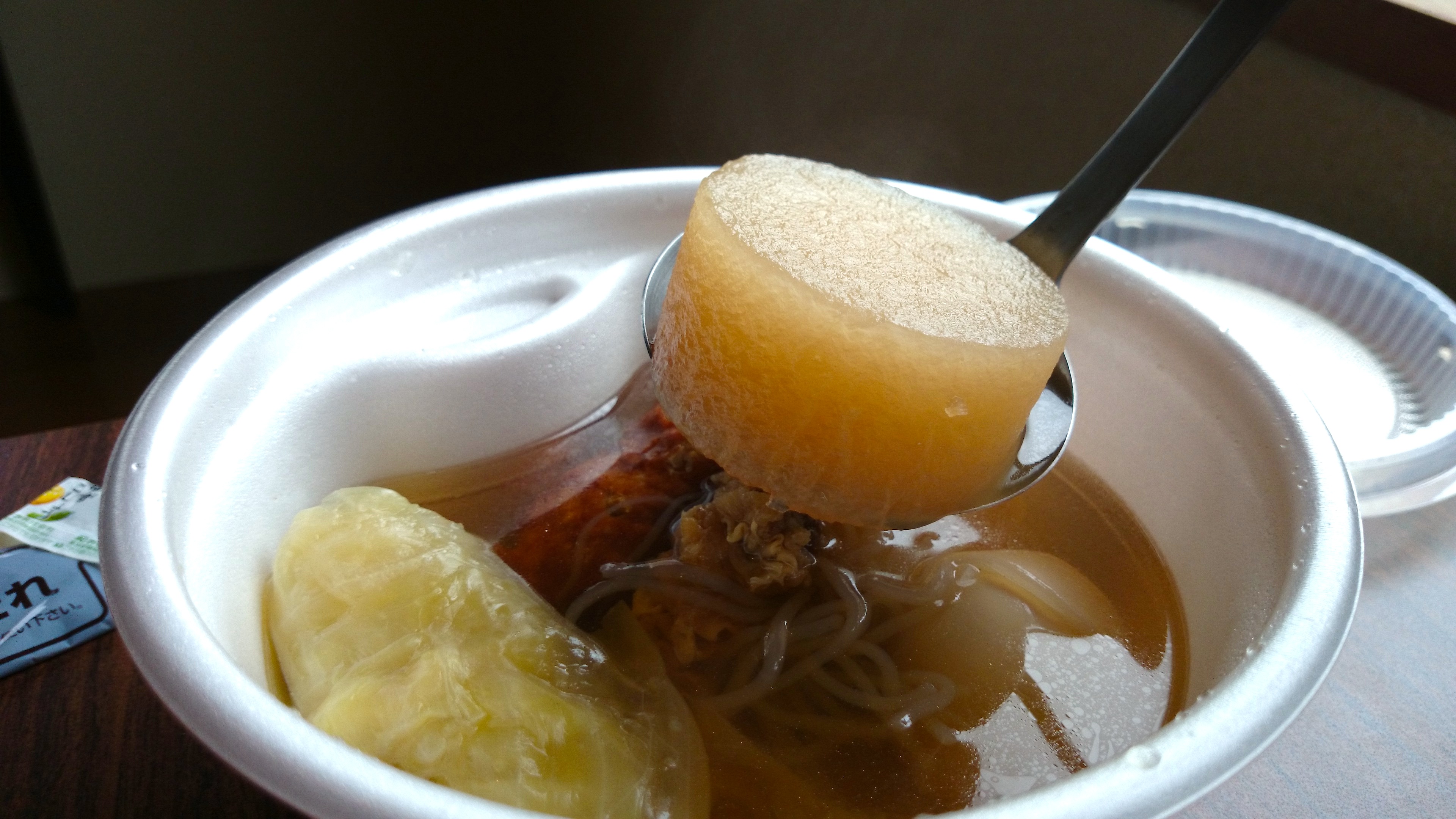
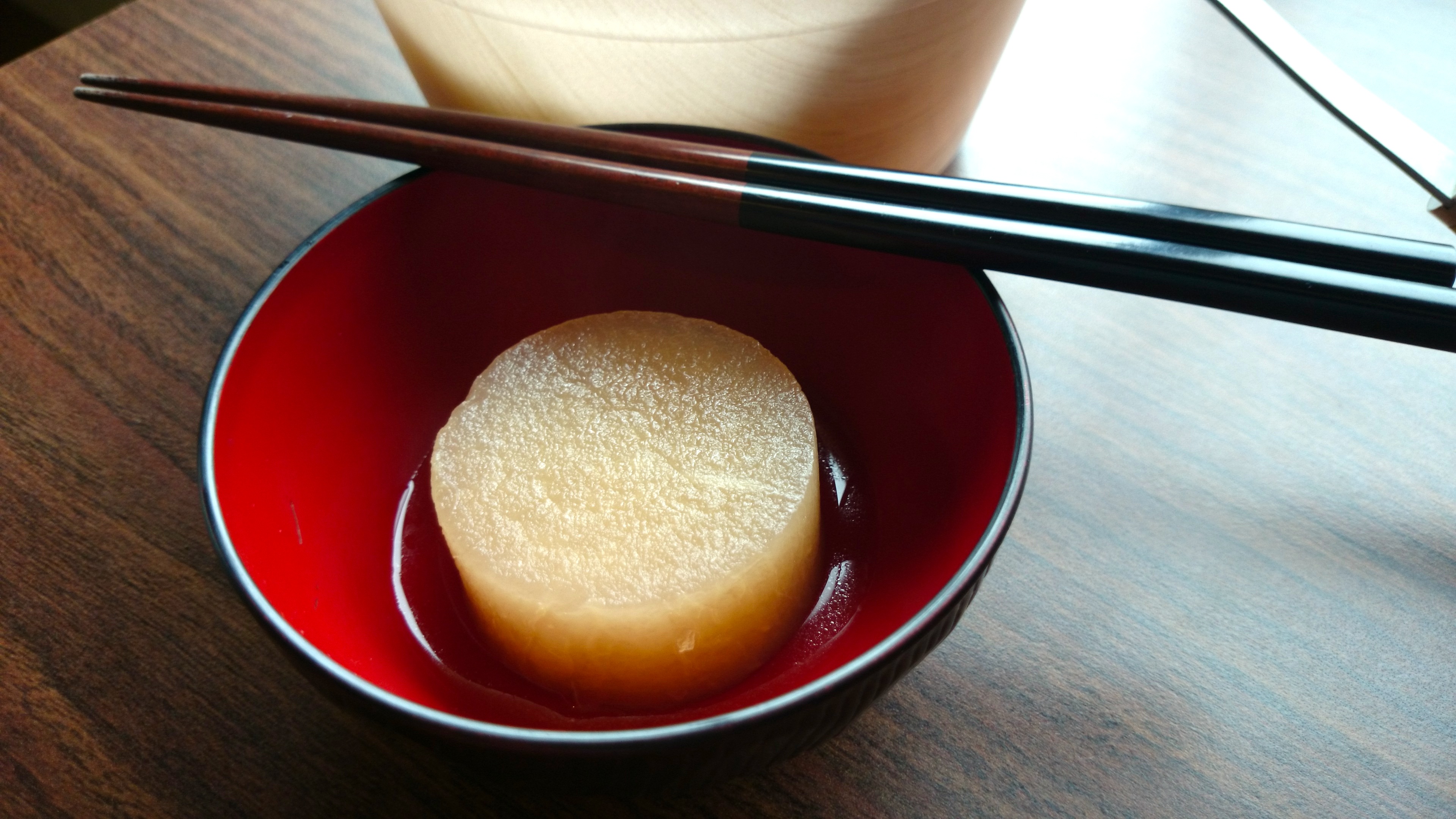
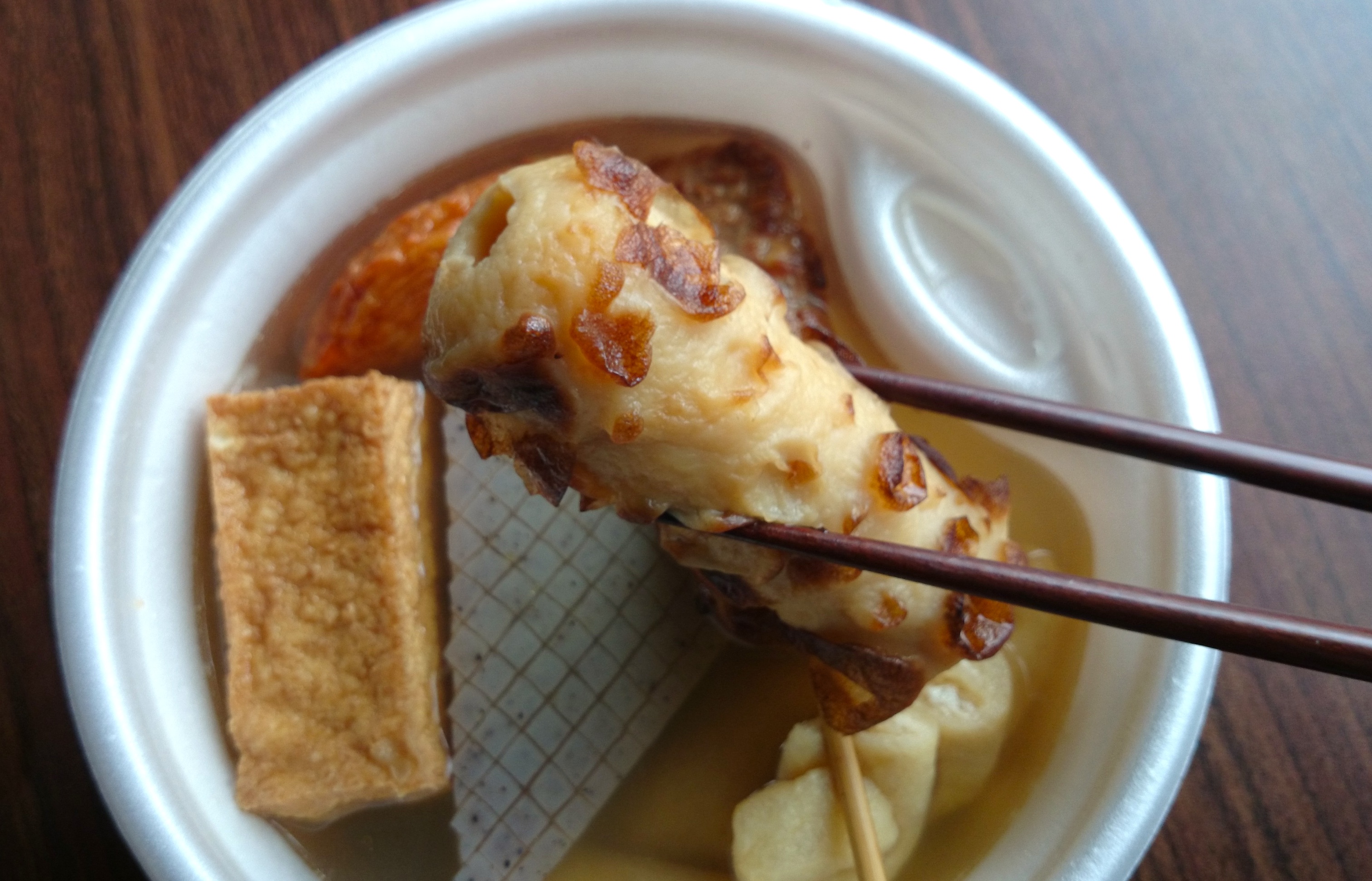
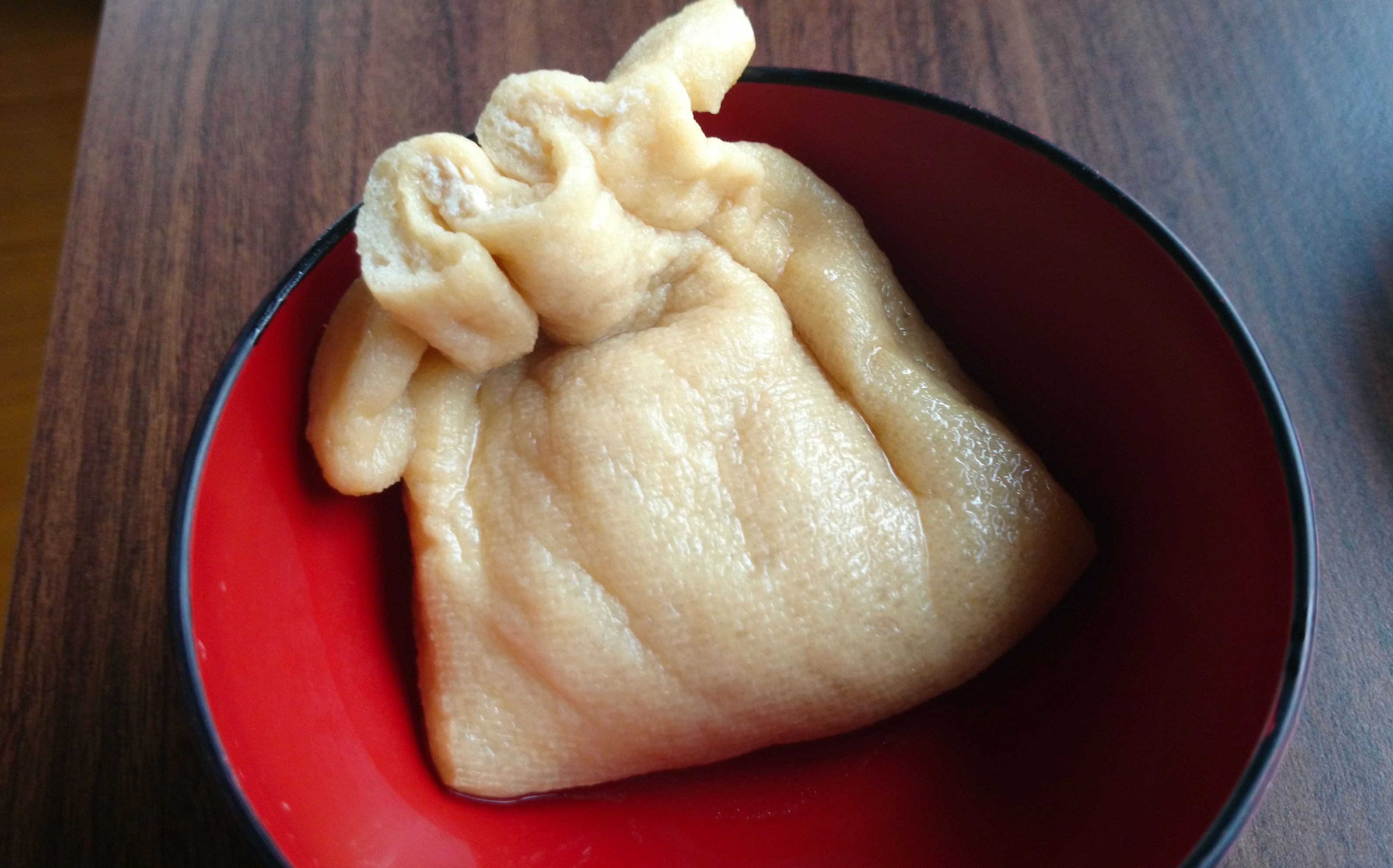
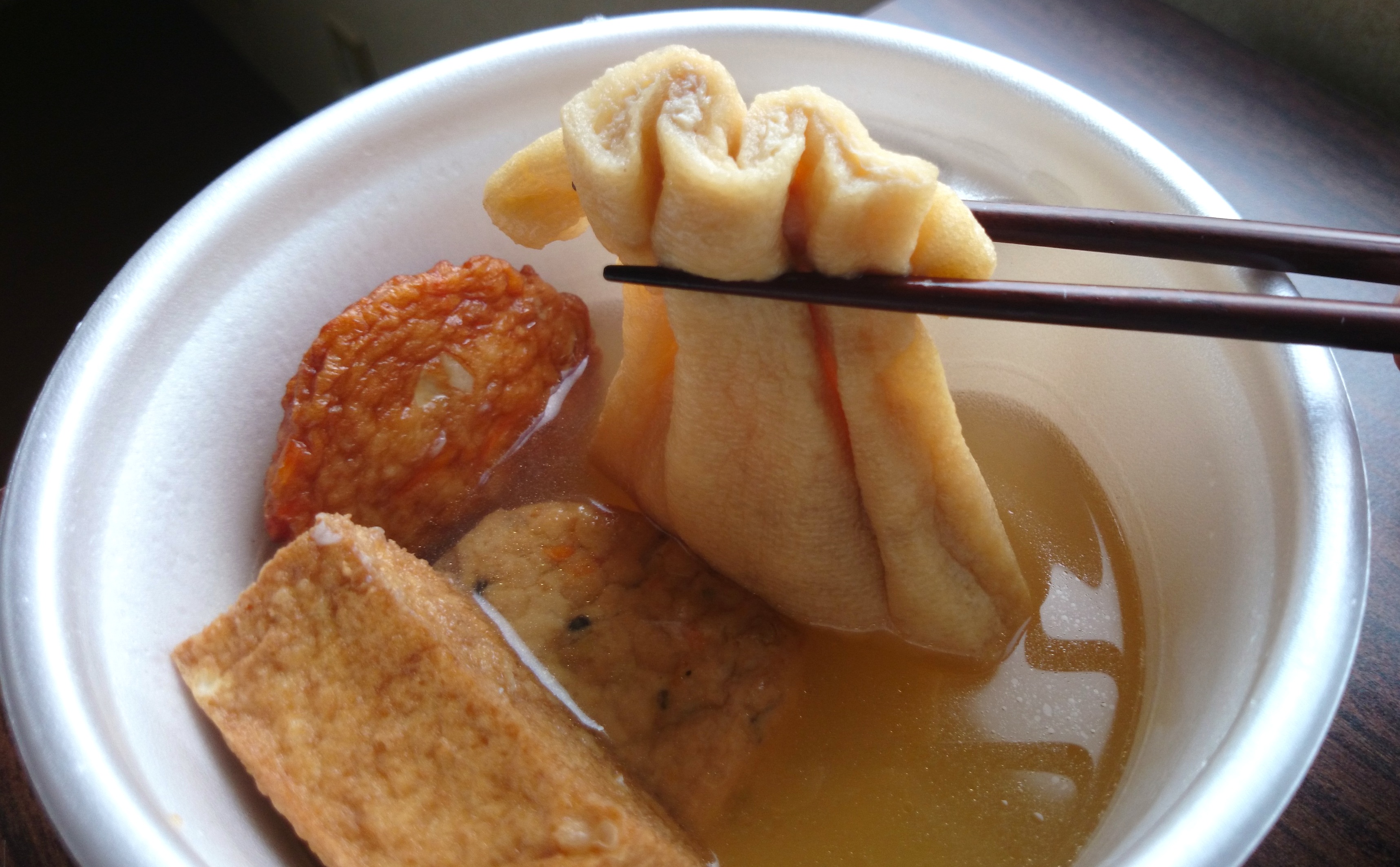

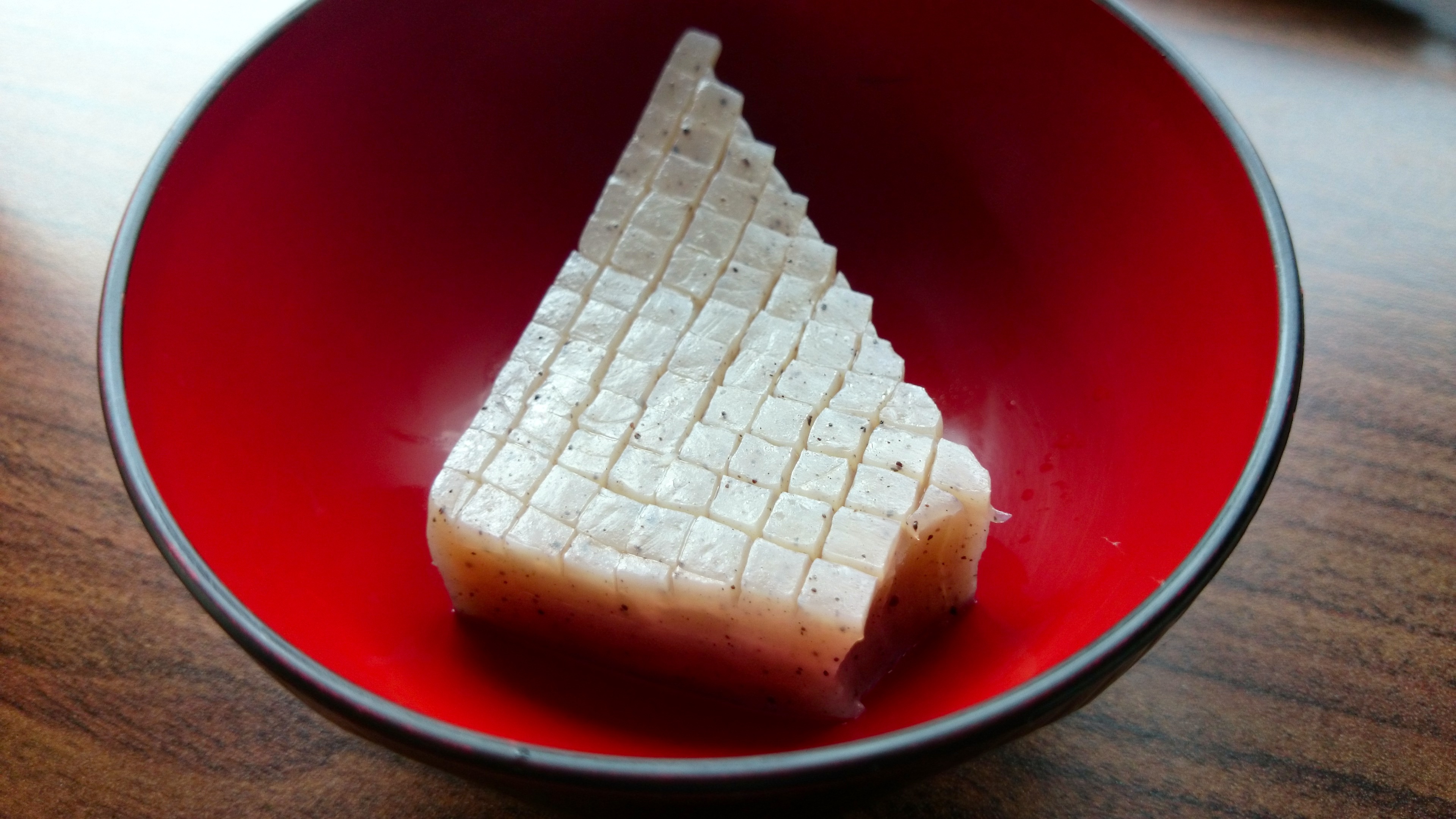
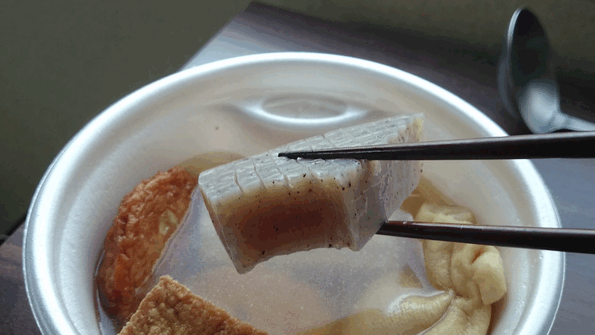
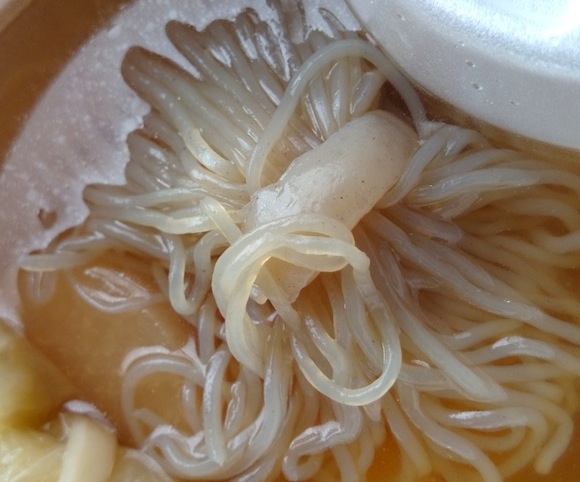
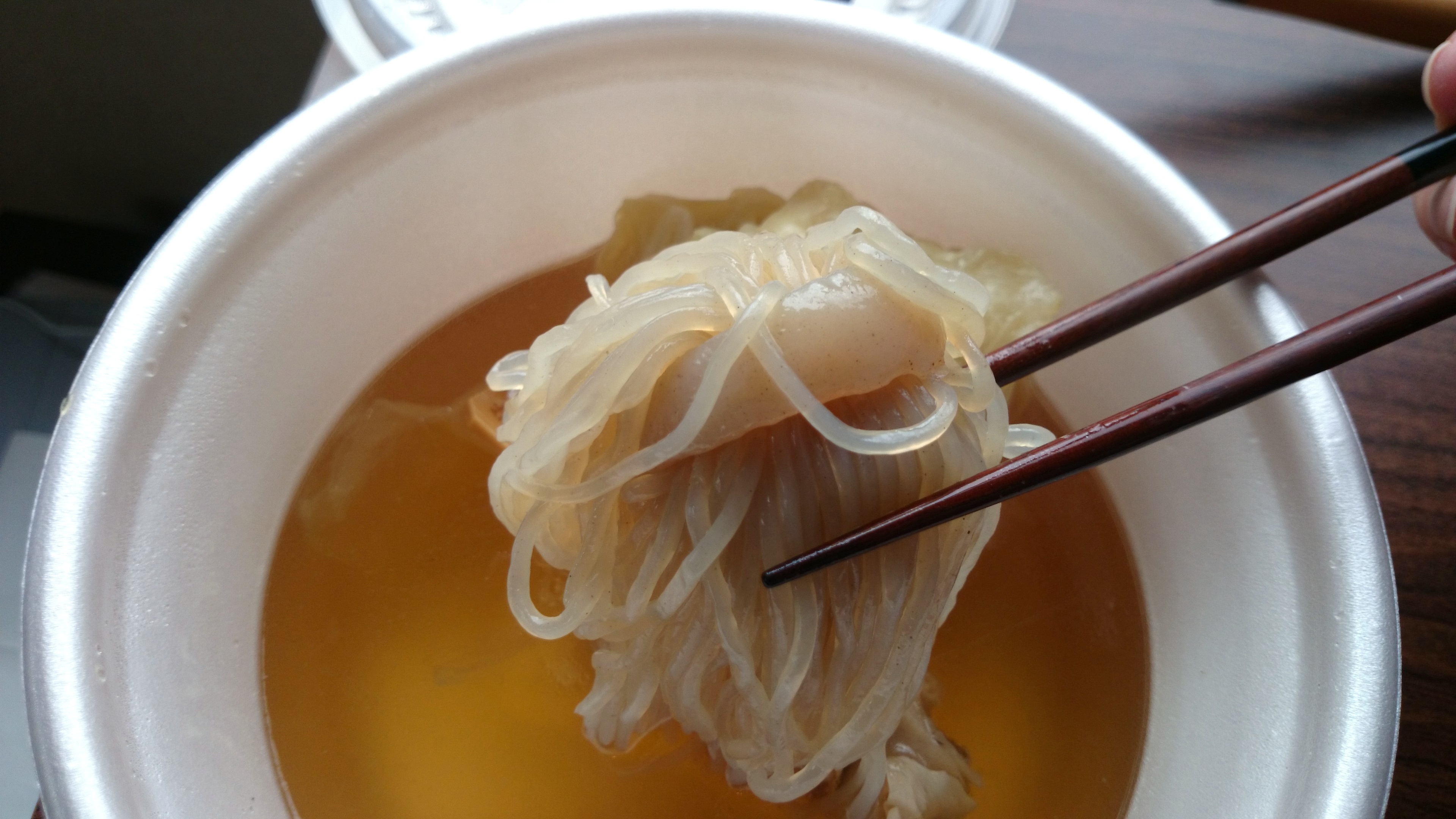
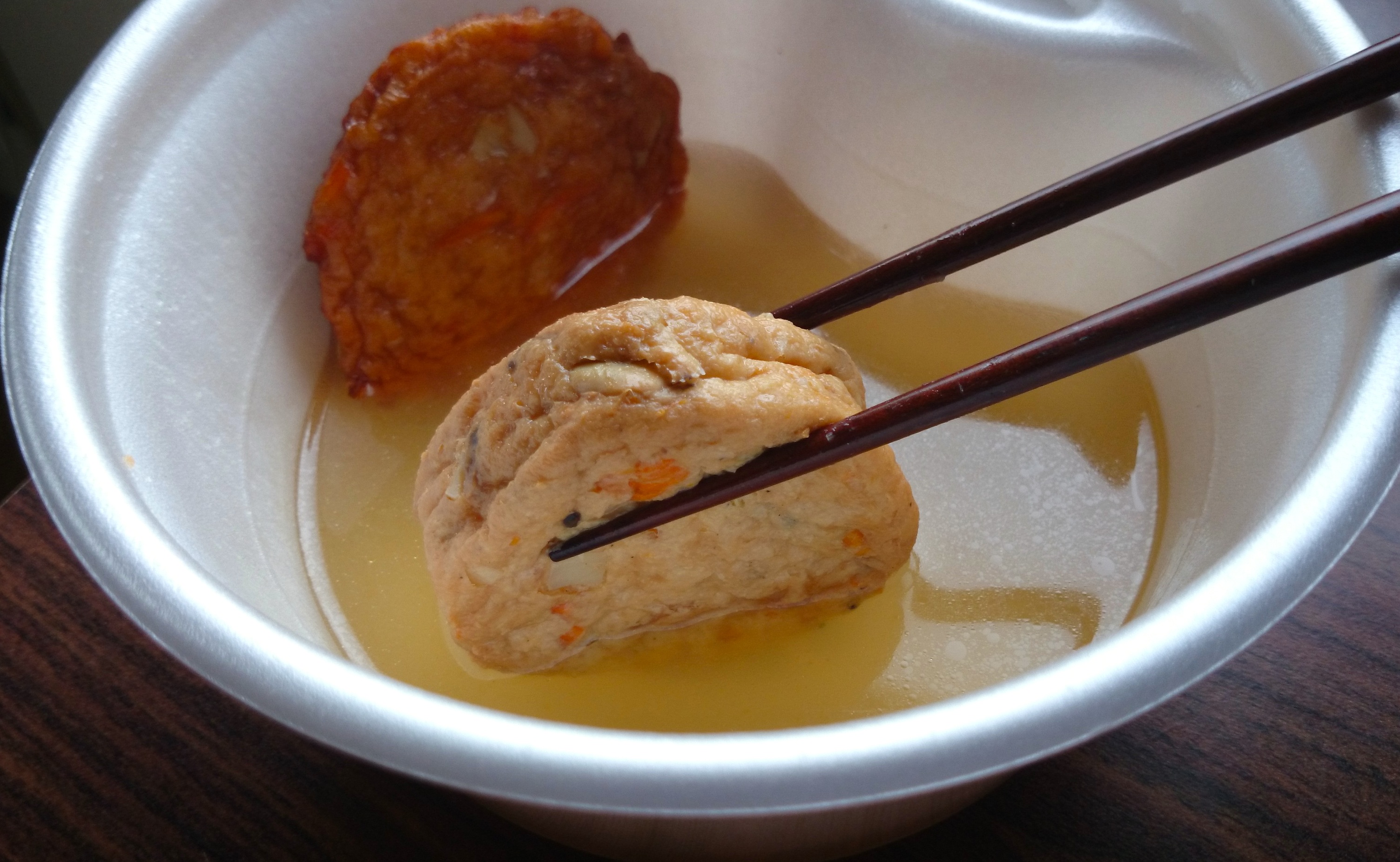
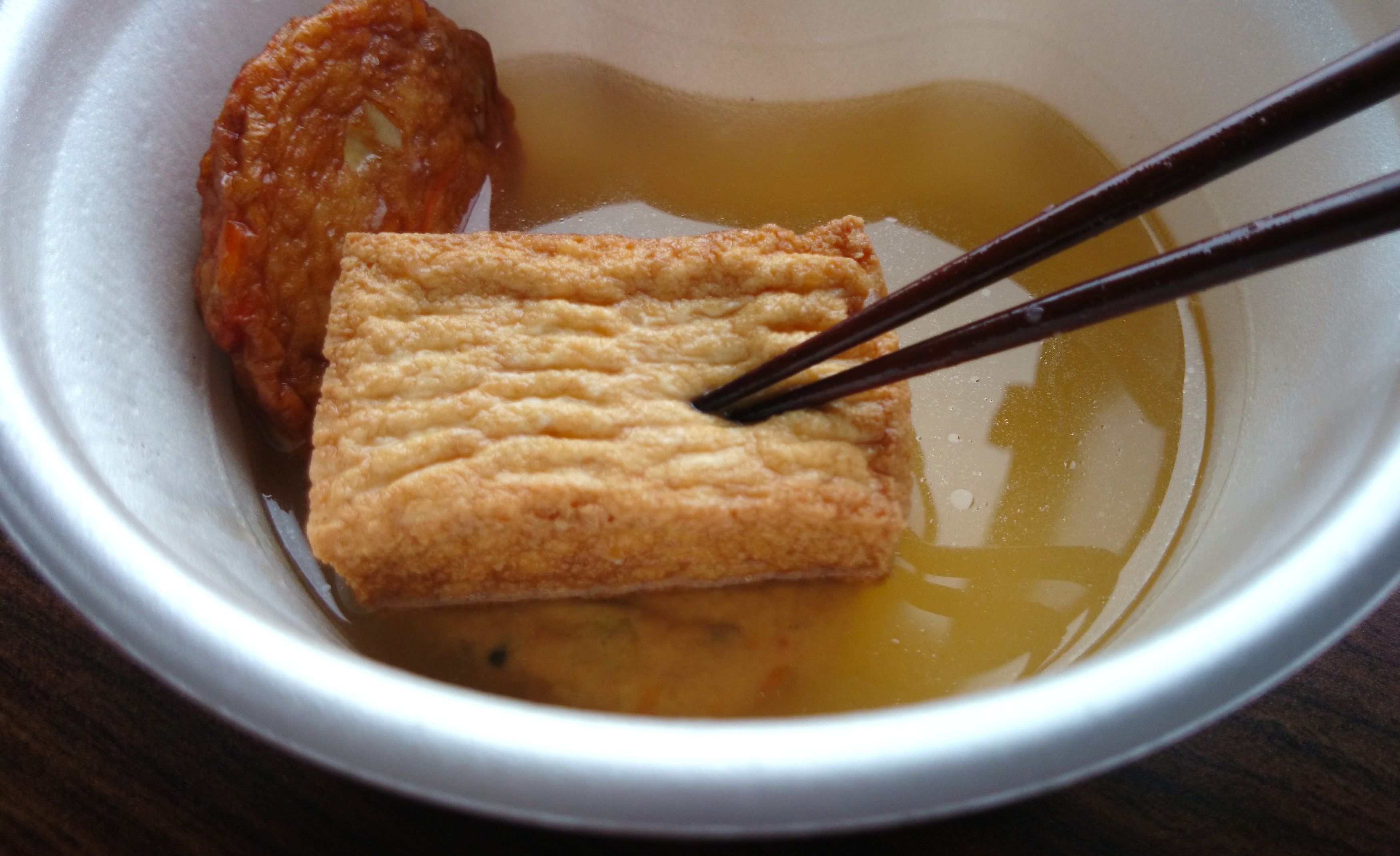
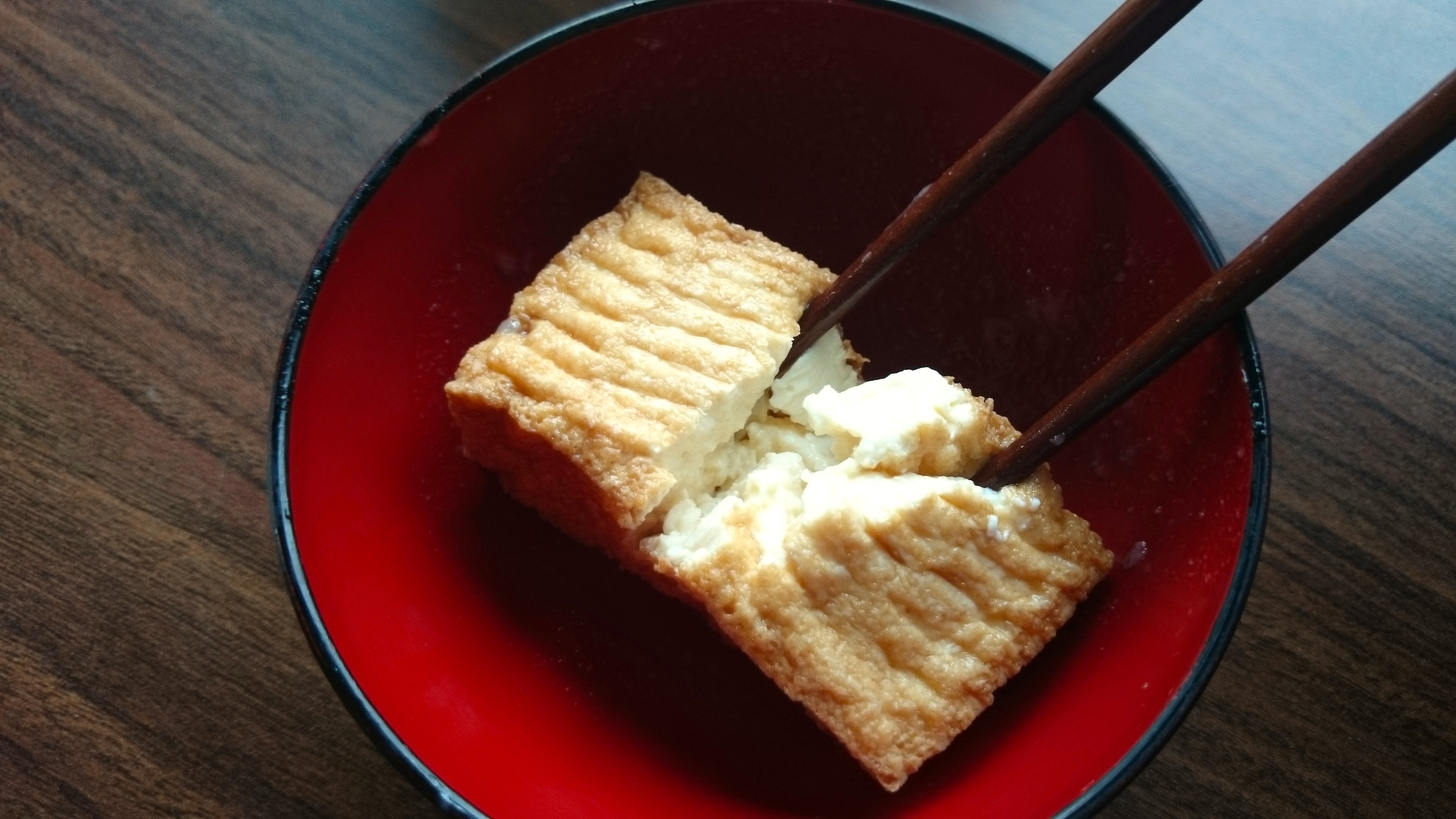
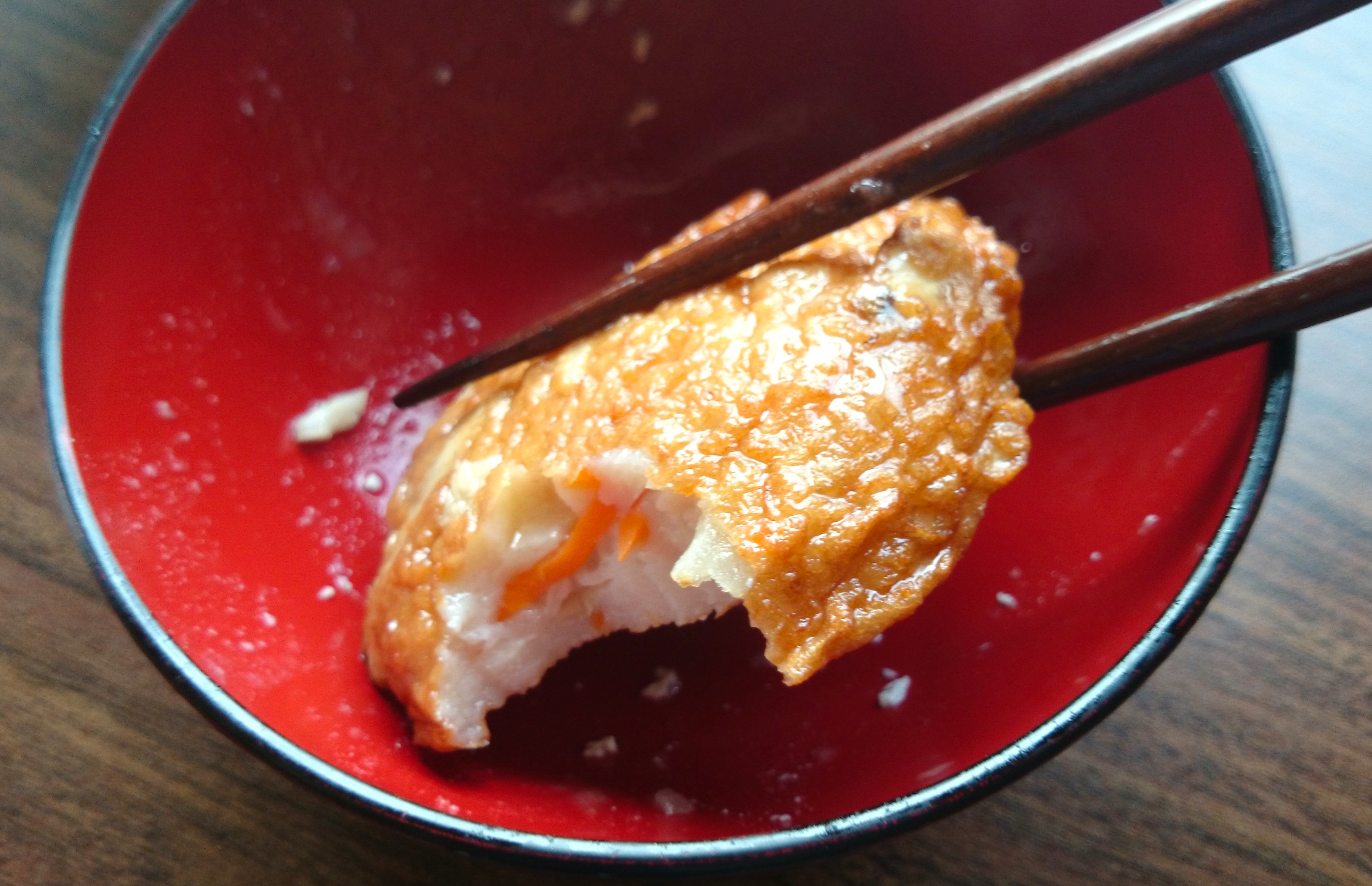
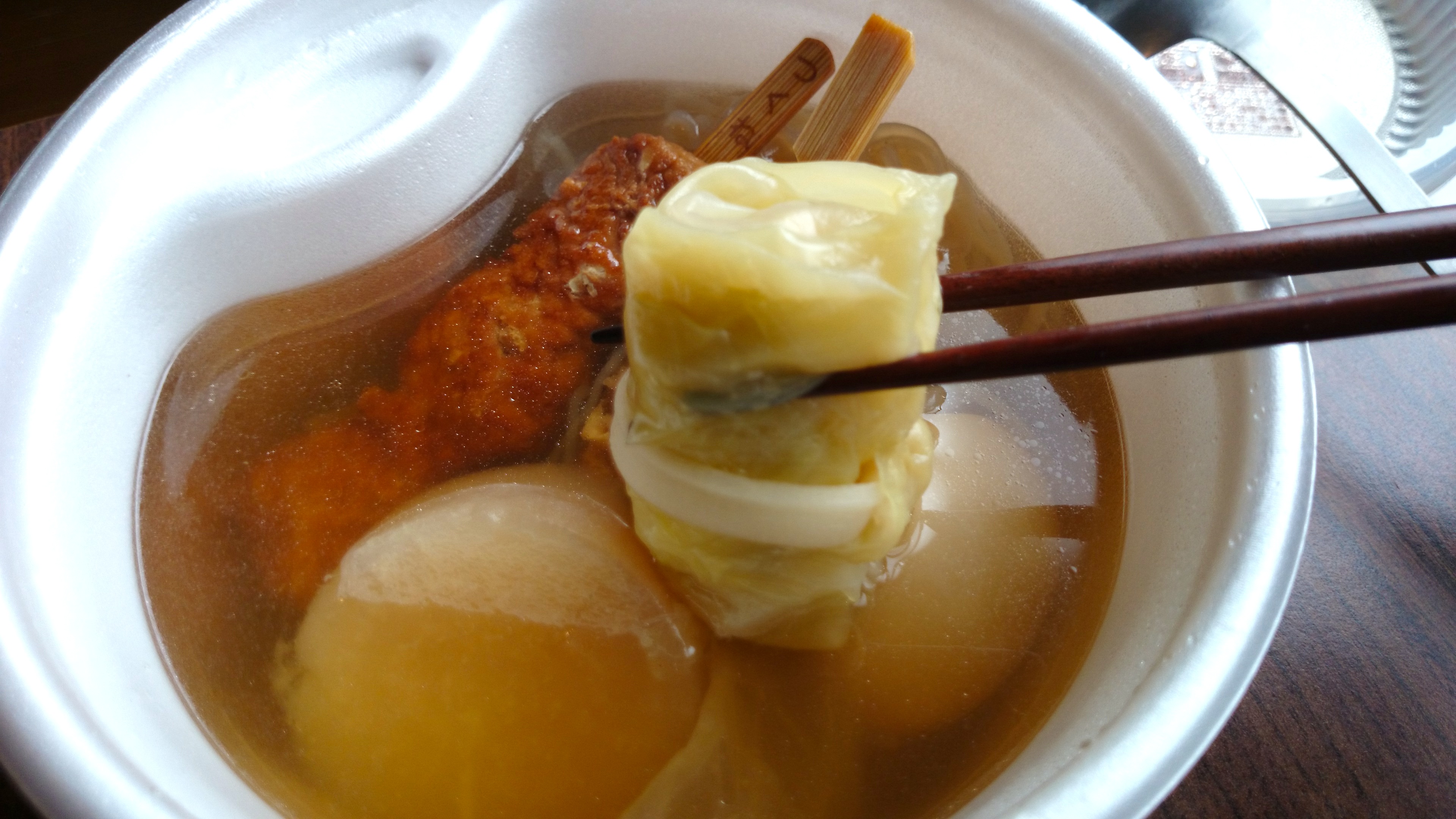

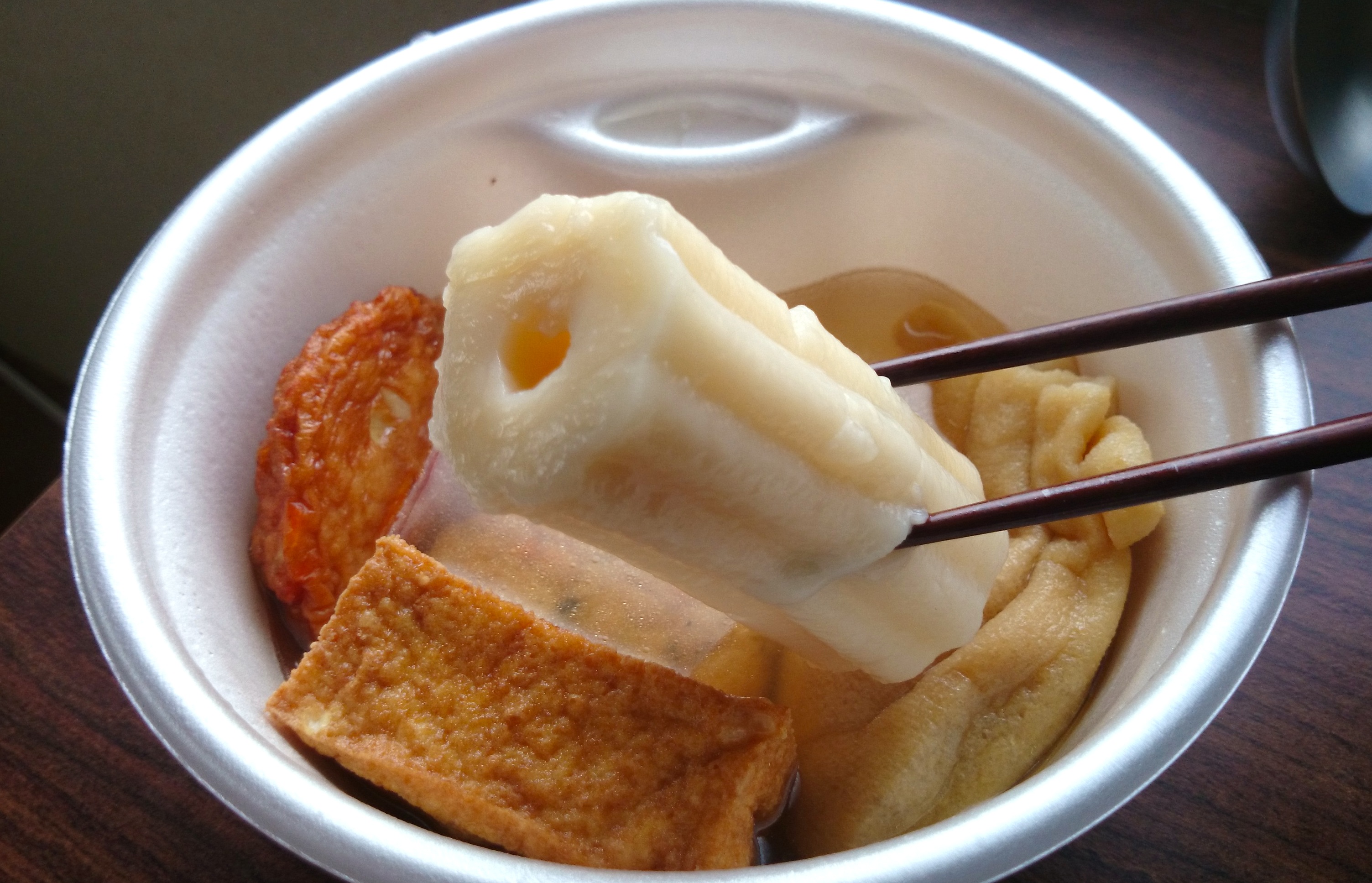
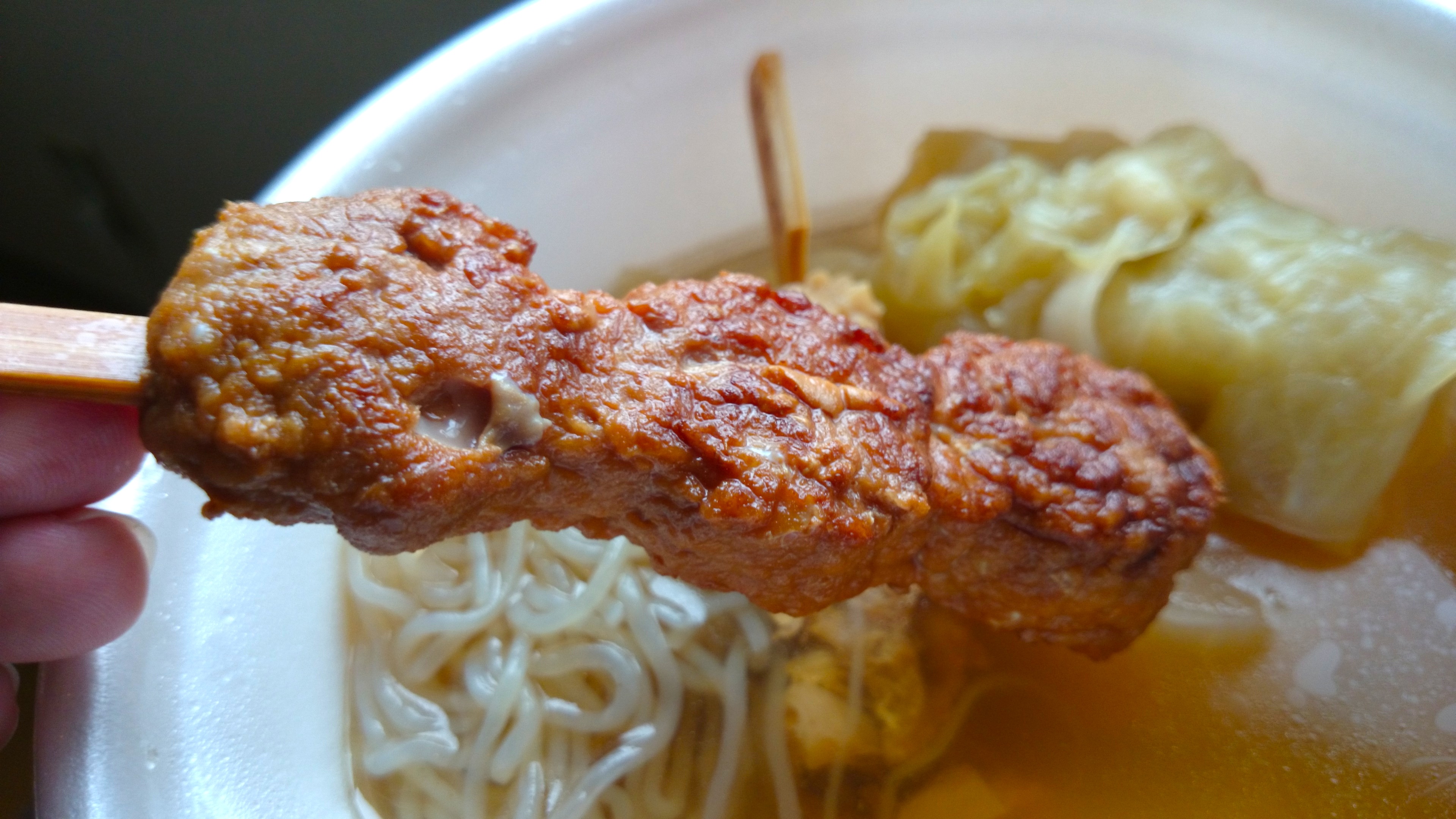

 A sad Oden Day in Japan as stores seem to be steadily stopping self-service pots
A sad Oden Day in Japan as stores seem to be steadily stopping self-service pots Japanese oden maker revolutionises the way we eat at home…with a few adjustments
Japanese oden maker revolutionises the way we eat at home…with a few adjustments Cat-themed oden kit warms and fills our bellies and our hearts
Cat-themed oden kit warms and fills our bellies and our hearts Japanese convenience store food takes a walk on the weird side with…cup pork?
Japanese convenience store food takes a walk on the weird side with…cup pork? Unlimited kushiage skewers, stewed oden, and booze at this Tokyo restaurant for under 20 bucks
Unlimited kushiage skewers, stewed oden, and booze at this Tokyo restaurant for under 20 bucks McDonald’s new Happy Meals offer up cute and practical Sanrio lifestyle goods
McDonald’s new Happy Meals offer up cute and practical Sanrio lifestyle goods All-you-can-drink Starbucks and amazing views part of Tokyo’s new 170 meter-high sky lounge
All-you-can-drink Starbucks and amazing views part of Tokyo’s new 170 meter-high sky lounge McDonald’s Japan releases a pancake pie for new retro kissaten coffeeshop series
McDonald’s Japan releases a pancake pie for new retro kissaten coffeeshop series Super Nintendo World expansion gets delayed for several months at Universal Studios Japan
Super Nintendo World expansion gets delayed for several months at Universal Studios Japan Studio Ghibli glasses cases let anime characters keep an eye on your spectacles
Studio Ghibli glasses cases let anime characters keep an eye on your spectacles More foreign tourists than ever before in history visited Japan last month
More foreign tourists than ever before in history visited Japan last month It’s Japanese commercial time! Watch the best ads from 2017 in one glossy 4K video
It’s Japanese commercial time! Watch the best ads from 2017 in one glossy 4K video Legendary Melon Bread by Tokyo Banana returns after 20-year absence【Taste Test】
Legendary Melon Bread by Tokyo Banana returns after 20-year absence【Taste Test】 Dogs now allowed on Catbus! Ghibli Park vehicles revise service animal policy
Dogs now allowed on Catbus! Ghibli Park vehicles revise service animal policy McDonald’s Japan goes old-school with new Showa-era Kissa Mac sweets lineup【Photos】
McDonald’s Japan goes old-school with new Showa-era Kissa Mac sweets lineup【Photos】 Disney princesses get official manga makeovers for Manga Princess Cafe opening in Tokyo
Disney princesses get official manga makeovers for Manga Princess Cafe opening in Tokyo Starbucks reopens at Shibuya Scramble Crossing with new look and design concept
Starbucks reopens at Shibuya Scramble Crossing with new look and design concept Beautiful new Final Fantasy T-shirt collection on the way from Uniqlo【Photos】
Beautiful new Final Fantasy T-shirt collection on the way from Uniqlo【Photos】 Is the new Shinkansen Train Desk ticket worth it?
Is the new Shinkansen Train Desk ticket worth it? Foreign English teachers in Japan pick their favorite Japanese-language phrases【Survey】
Foreign English teachers in Japan pick their favorite Japanese-language phrases【Survey】 Japanese convenience store packs a whole bento into an onigiri rice ball
Japanese convenience store packs a whole bento into an onigiri rice ball We try out “Chan Ramen”, an underground type of ramen popular in the ramen community
We try out “Chan Ramen”, an underground type of ramen popular in the ramen community Studio Ghibli releases Kiki’s Delivery Service chocolate cake pouches in Japan
Studio Ghibli releases Kiki’s Delivery Service chocolate cake pouches in Japan Japan’s bone-breaking and record-breaking roller coaster is permanently shutting down
Japan’s bone-breaking and record-breaking roller coaster is permanently shutting down New definition of “Japanese whiskey” goes into effect to prevent fakes from fooling overseas buyers
New definition of “Japanese whiskey” goes into effect to prevent fakes from fooling overseas buyers Our Japanese reporter visits Costco in the U.S., finds super American and very Japanese things
Our Japanese reporter visits Costco in the U.S., finds super American and very Japanese things Studio Ghibli unveils Mother’s Day gift set that captures the love in My Neighbour Totoro
Studio Ghibli unveils Mother’s Day gift set that captures the love in My Neighbour Totoro Foreign passenger shoves conductor on one of the last full runs for Japan’s Thunderbird train
Foreign passenger shoves conductor on one of the last full runs for Japan’s Thunderbird train Domino’s Japan now sells…pizza ears?
Domino’s Japan now sells…pizza ears? New Japanese KitKat flavour stars Sanrio characters, including Hello Kitty
New Japanese KitKat flavour stars Sanrio characters, including Hello Kitty Kyoto creates new for-tourist buses to address overtourism with higher prices, faster rides
Kyoto creates new for-tourist buses to address overtourism with higher prices, faster rides Sales of Japan’s most convenient train ticket/shopping payment cards suspended indefinitely
Sales of Japan’s most convenient train ticket/shopping payment cards suspended indefinitely Sold-out Studio Ghibli desktop humidifiers are back so Totoro can help you through the dry season
Sold-out Studio Ghibli desktop humidifiers are back so Totoro can help you through the dry season Japanese government to make first change to romanization spelling rules since the 1950s
Japanese government to make first change to romanization spelling rules since the 1950s Ghibli founders Toshio Suzuki and Hayao Miyazaki contribute to Japanese whisky Totoro label design
Ghibli founders Toshio Suzuki and Hayao Miyazaki contribute to Japanese whisky Totoro label design Doraemon found buried at sea as scene from 1993 anime becomes real life【Photos】
Doraemon found buried at sea as scene from 1993 anime becomes real life【Photos】 Tokyo’s most famous Starbucks is closed
Tokyo’s most famous Starbucks is closed One Piece characters’ nationalities revealed, but fans have mixed opinions
One Piece characters’ nationalities revealed, but fans have mixed opinions We asked a Uniqlo employee what four things we should buy and their suggestions didn’t disappoint
We asked a Uniqlo employee what four things we should buy and their suggestions didn’t disappoint Princesses, fruits, and blacksmiths: Study reveals the 30 most unusual family names in Japan
Princesses, fruits, and blacksmiths: Study reveals the 30 most unusual family names in Japan We build a miniature Japanese oden stall with gorgeous results
We build a miniature Japanese oden stall with gorgeous results Learn to love the taste of raw daikon with this simple recipe 【RocketKitchen】
Learn to love the taste of raw daikon with this simple recipe 【RocketKitchen】 We make one of Japan’s best breakfast treats: Himeji almond toast【SoraKitchen】
We make one of Japan’s best breakfast treats: Himeji almond toast【SoraKitchen】 Eat at a kotatsu while enjoying the view from Osaka’s Harukas 300 Observatory this winter
Eat at a kotatsu while enjoying the view from Osaka’s Harukas 300 Observatory this winter We create a Japanese izakaya pub at home with an amazing all-in-one kitchen gadget
We create a Japanese izakaya pub at home with an amazing all-in-one kitchen gadget Why can’t all food be Totoro-shaped, you ask? Actually, it can, awesome Japanese cook shows us
Why can’t all food be Totoro-shaped, you ask? Actually, it can, awesome Japanese cook shows us The best Japanese curry in Japan isn’t eaten at a restaurant
The best Japanese curry in Japan isn’t eaten at a restaurant Japanese stir-fried noodles a huge hit in Kenya
Japanese stir-fried noodles a huge hit in Kenya Agedashi…doughnuts? Traditional Japanese tofu dish gets a sweet twist from Mister Donut
Agedashi…doughnuts? Traditional Japanese tofu dish gets a sweet twist from Mister Donut Reserve a spot at Michelin award-winning Waranokura for an unforgettable udon experience
Reserve a spot at Michelin award-winning Waranokura for an unforgettable udon experience The top 10 most popular instant noodle brands at the start of 2021
The top 10 most popular instant noodle brands at the start of 2021 I can’t believe it’s not cake! Bakery’s newest creation looks just like tuna-sashimi bowl
I can’t believe it’s not cake! Bakery’s newest creation looks just like tuna-sashimi bowl Japan’s subscription service simply called “Mom” is totally worth it
Japan’s subscription service simply called “Mom” is totally worth it 7-Eleven opens “next generation” SIP convenience store in Japan
7-Eleven opens “next generation” SIP convenience store in Japan We try European Cup Noodle Soba flavors to see which ones come out on top 【Taste test】
We try European Cup Noodle Soba flavors to see which ones come out on top 【Taste test】
Leave a Reply